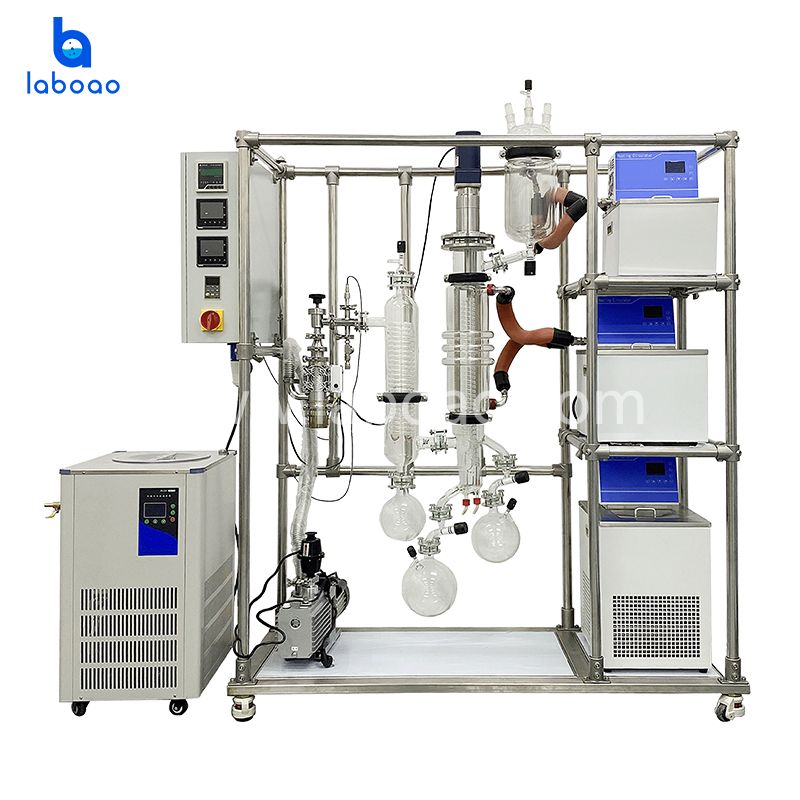1. Traditional essential oil extraction
1.1 Extraction method
Water vapor extraction is to pulverize the plant and put it into a distiller, pass in water vapor, and distill the essential oil along with the water vapor. It avoids overheating or coking of co-water extraction. Steam extraction is one of the most widely used methods at present, which is suitable for the extraction of volatile components that are not soluble in water.
1.2 Solvent extraction method
The crude essential oil can be obtained by continuous reflux extraction or cold immersion extraction with low-boiling organic solvents such as petroleum ether and diethyl ether, and the extract can be distilled or distilled under reduced pressure to remove the solvent. The yield of essential oils in this method is higher, but because resin oils, waxes, etc. in the plant body are also proposed at the same time, the essential oils contain more impurities, so they must be further refined.
The traditional essential oil extraction methods include pressing method and absorption method, which are respectively aimed at the purification of essential oils that are rich in essential oils and need to maintain the original fresh fragrance of essential oils. Traditional essential oil extraction generally has low cost, long extraction time and many impurities.
2. New Extraction method of essential oils
2.1 Ultra-high pressure extraction method
The ultra-high pressure extraction technology is to quickly apply a hydrostatic pressure of more than 100MPa to the raw materials under normal temperature or lower temperature conditions, and maintain the pressure for a certain period of time, so as to achieve the purpose of rapid and efficient extraction.
2.2 Ultrasonic-assisted extraction
Ultrasonic-assisted extraction uses the strong cavitation effect and secondary effect produced by ultrasonic radiation pressure to increase the movement speed and frequency of the extracted component molecules, enhance the penetration of the solvent, and fully mix the extracted components with the solvent to improve the extraction efficiency.
2.3 Microwave-assisted extraction
Microwave-assisted extraction mainly penetrates the extraction medium through microwaves, allowing the extraction medium to absorb microwave energy, so that the cells are ruptured due to excessive internal pressure, and the active ingredients flow out and dissolve into the extractant, and then the extract is obtained by subsequent filtration separation.
2.4 Supercritical CO₂ extraction
Supercritical fluid extraction is an extraction technology that uses supercritical fluid as a solvent to extract some effective components from solid or liquid and separate them. It is characterized by high extraction rate and purity.
In addition, the commonly used new essential oil extraction methods include enzymatic extraction, simultaneous distillation-static headspace liquid-phase microextraction, subcritical extraction, microcapsule-aqueous two-phase extraction, etc. The extraction of new essential oils generally has the advantages of high oil yield, short extraction time, and less damage to active ingredients, but requires relatively high process and cost.
Separation technology of plant essential oils
The essential oils extracted from plants are mixtures. In order to obtain a single chemical component, they must be further separated. The commonly used separation methods are as follows.
1. Molecular distillation method
This technology uses the difference in the free path of molecular motion of different substances to achieve separation. It can be operated in an environment far from the boiling point. It has the characteristics of low distillation pressure, short heating time and high degree of separation, which can greatly reduce the separation cost of high-boiling point materials. Good protection of heat-sensitive substances. Therefore, molecular distillation technology is particularly suitable for the separation of high-boiling and heat-sensitive materials, especially volatile oils and natural products whose active ingredients are extremely sensitive to temperature. Wiped film molecular distillation machine is recommended.
2. Crystallization method
The freezing crystallization method uses the method of low temperature freezing to make certain compounds in the essential oil crystallize in solid form, and then separate the solid material from other liquid components to obtain a purer product. Crystallization extraction and separation technology has little pollution, and requires multiple purifications to meet the required product requirements. In practical applications, glass crystallization reactors are generally used for small-scale research, and stainless steel crystallization reactors are used in pilot scale and production.
3. Chemical separation method
The chemical separation method is a method of chemically treating the components according to the structure or functional group of each component in the essential oil to separate the components.
4. Chromatography
Silica gel and alumina adsorption column chromatography is a common method for separating essential oil components. The combination of chromatography and fractionation works better.
With the progress of industrial development, the extraction and separation technology of essential oils has gradually matured. The extraction and separation of common plant essential oils such as peppermint, jasmine, rose, and lavender is close to saturation. The extraction and separation of small molecules and pure natural plant essential oils has become a new market demand, and also put forward higher requirements for laboratory separation equipment.
